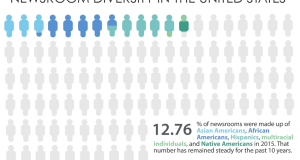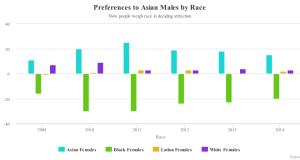By Yanan Wang and Parminder Deo
Two years ago, Ryan Singel had a routine.
He worked at Wired.com, where he wrote and edited stories about cybersecurity, tech policy, startups, search engines and more — name an issue impacting Silicon Valley, and it was likely that he’d covered it during his decade on the job.
“There’s a rhythm to publishing,” he said.
Pitch meeting in the morning. Five-hundred-word story filed in the afternoon. Then some back and forth between the art department, editors, the copy desk. Publication by nightfall.
As the office became more digitally-driven, the pace of Singel’s routine increased, but the technology he was using didn’t get more intelligent.
“That’s what frustrated me,” he said. “The quality of the tools wasn’t keeping up with the velocity of the changes in online publishing.”
So he ditched rhythm to enter an unpredictable world.
In 2012, Singel left Wired.com to build the solution that he had been looking for. His startup, Contextly, is an engagement platform aimed at keeping readers on their clients’ websites, whether that is a major metropolitan newspaper like the Dallas Morning News or a niche website like Adafruit, which bills itself as “the best place online for learning electronics.”
Many of Singel’s clients are media startups themselves, which makes experimentation a major part of their relationship.
He’s not alone in trying to tap into the growing demand for media technologies as traditional outlets scramble to find ways to keep up with a changing readership landscape. Matter, the public media accelerator from which Contextly emerged, has now cycled through its fourth class of startups after being founded two years ago with the mission to support “ventures that have the potential to change media for good.”
The results so far have been varied. SpokenLayer, another Matter startup, is currently in the process of signing on high-profile news organizations as clients. A digital audio platform that turns articles into audio recordings, SpokenLayer is joining a slew of journalism startups tapping into the markets beyond writing.
“There’s already so much competition for visual time,” founder Will Mayo said. “We’re one of the few companies trying to access people on auditory channels.”
SpokenLayer has found that the amount of time spent on an article increases from 10 seconds to 15 minutes when accompanied by an audio track.
Meanwhile, other Matter ventures like Beatroot, an analytics system for digital publishing, have since been discontinued. So goes the world of startup.
“At its heart, Matter is about community and culture,” Matter managing partner Corey Ford said. “It is a collaborative community by design because that’s how innovation happens.”
In Mountain View, Calif., where companies like Google are based, a startup called OZY Media also finds its home. The international online magazine – backed by Silicon Valley notablesincluding Laurene Powell Jobs, wife of the late Apple co-founder Steve Jobs – employs former professionals from companies as diverse as VICE and Goldman Sachs, branding itself as writing for the “change generation.”
“I think a change generation has shown up,” said OZY founder Carlos Watson, “and the people who are often running the shops don’t see it.”
Jim Brady, owner of Philadelphia news startup Billy Penn, agreed that most traditional media organizations are still playing catch-up. The rate at which technologies have emerged for digesting media has far outpaced the internal growth of newspapers and magazines. He was executive editor of washingtonpost.com for four years and also is former editor-in-chief of Digital First Media.
Journalists should never have been surprised by the increasing prominence of digital outlets, Brady said. But they were.
“The Internet used to be viewed as a distraction,” Brady said. “Now no one is debating whether the Internet is the future.”
Now that anyone with a computer can upload blog posts online, he noted, established publications can no longer be the “gatekeepers” they once were.
“If you’re sitting there trying to yell at anyone who can publish, you’re screaming into the wind,” Brady said. “What you have to do is put yourself a little bit farther downstream — to look at everything that’s coming out of this fire hose and separate the facts from the fancy, the propaganda from the truth.”
 VOICES Publishing from the AAJA National Convention
VOICES Publishing from the AAJA National Convention







